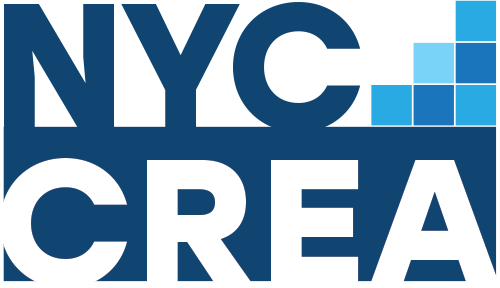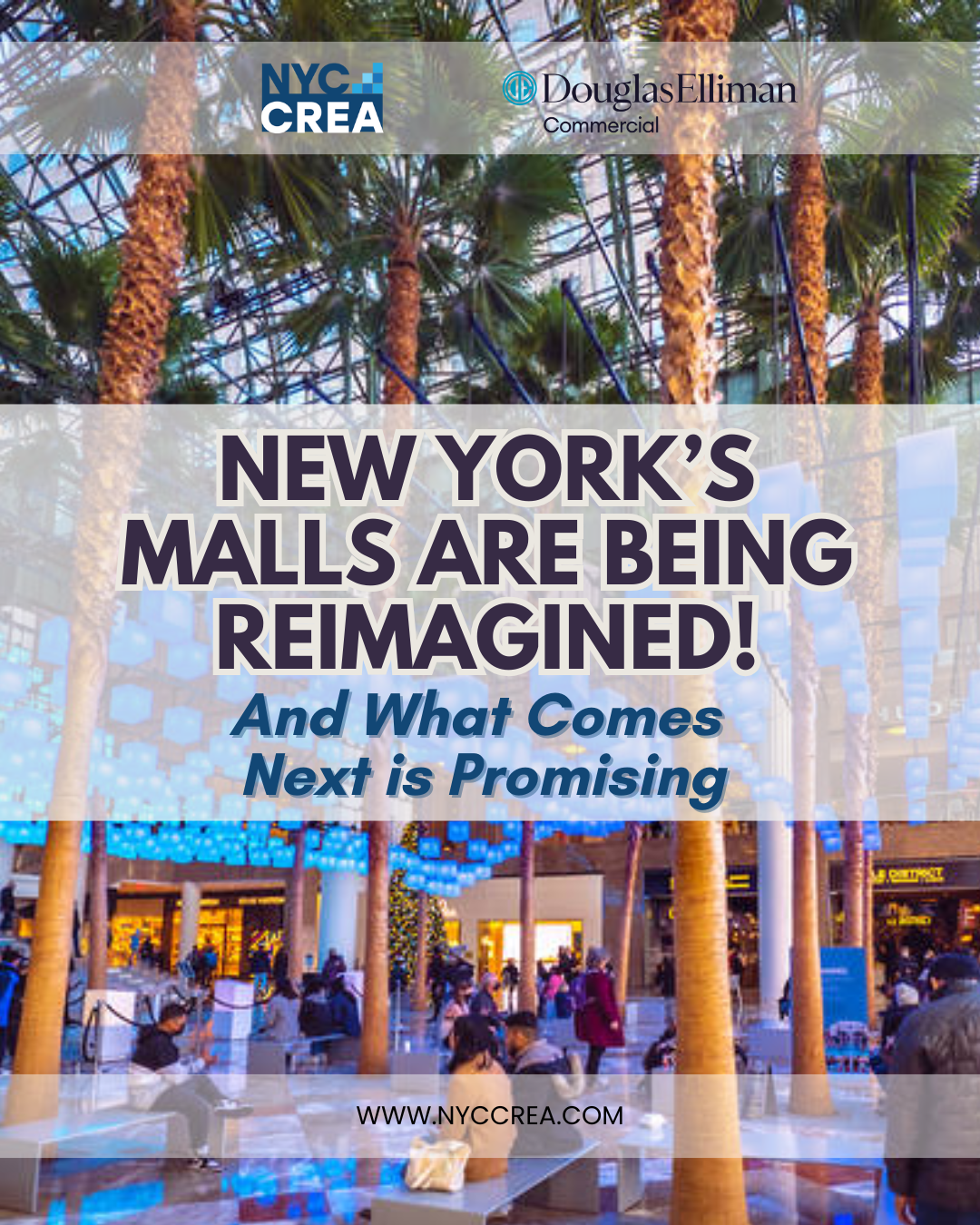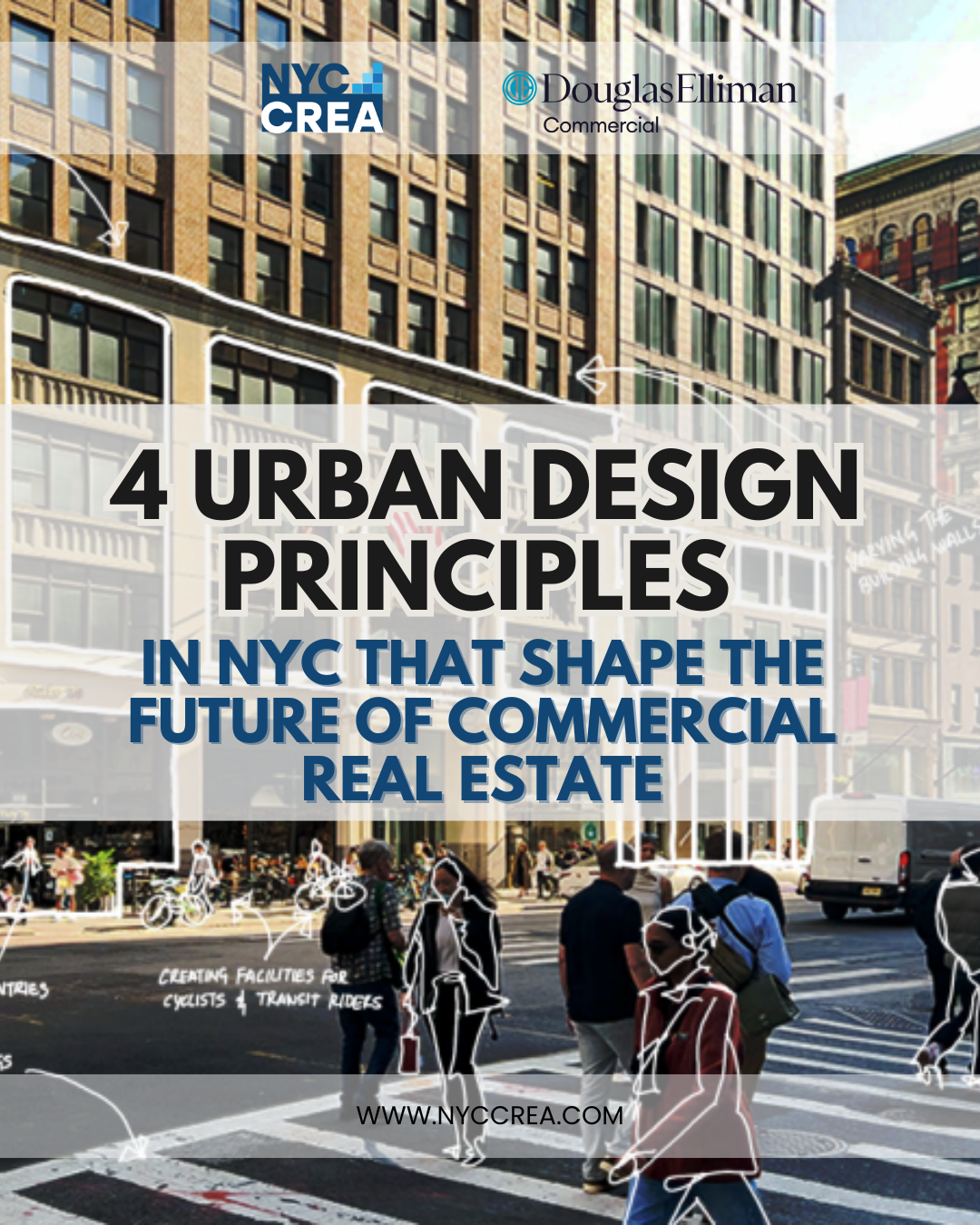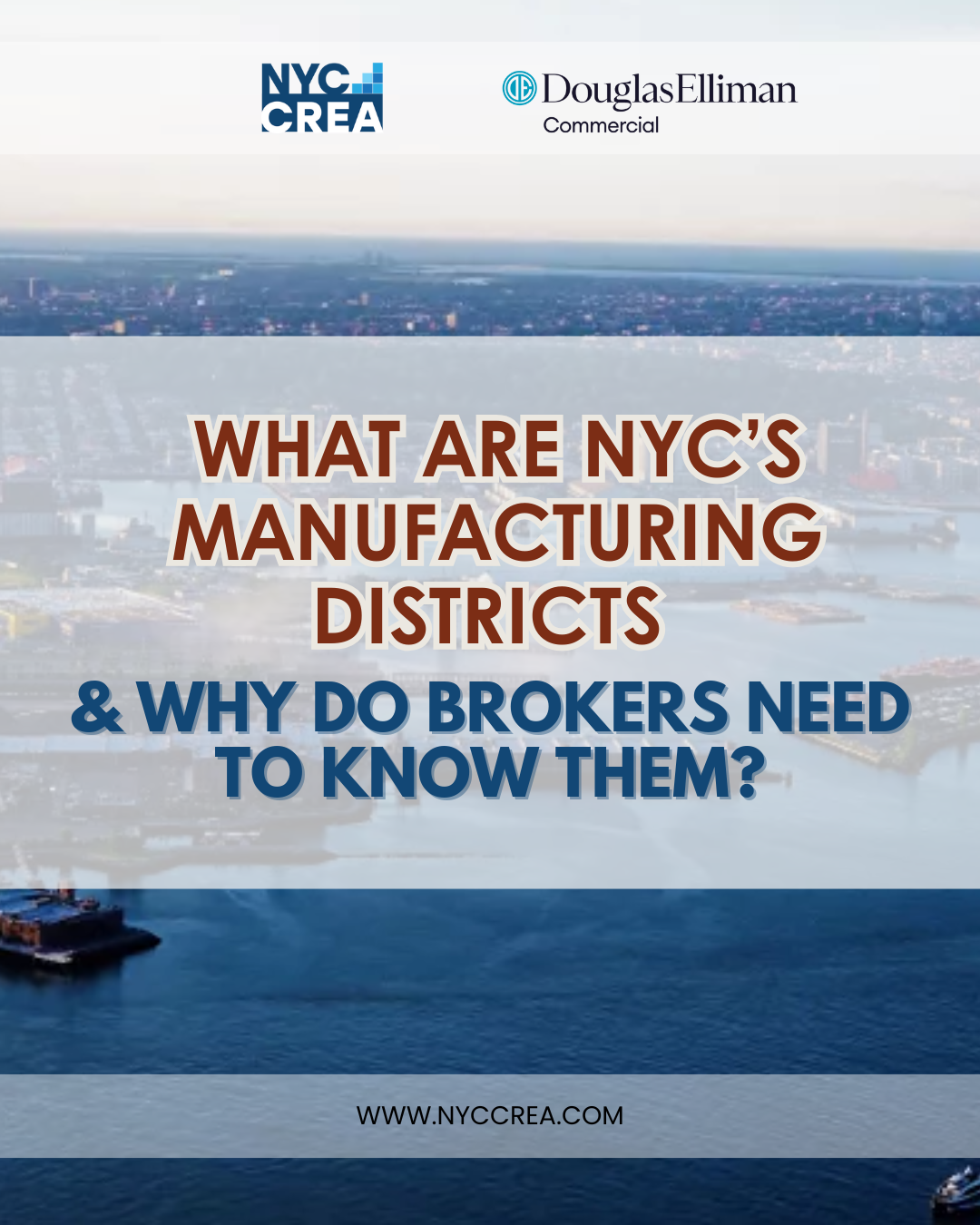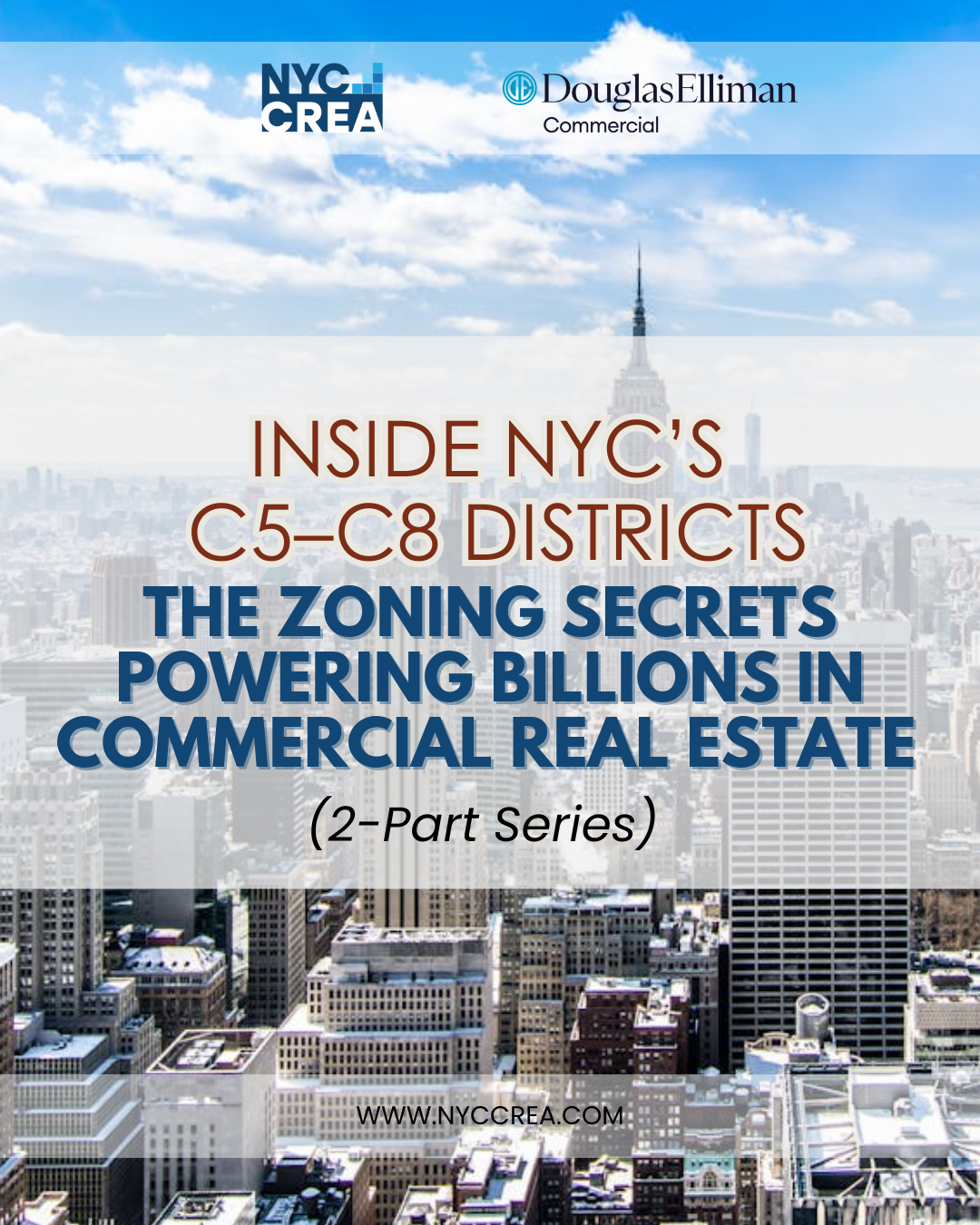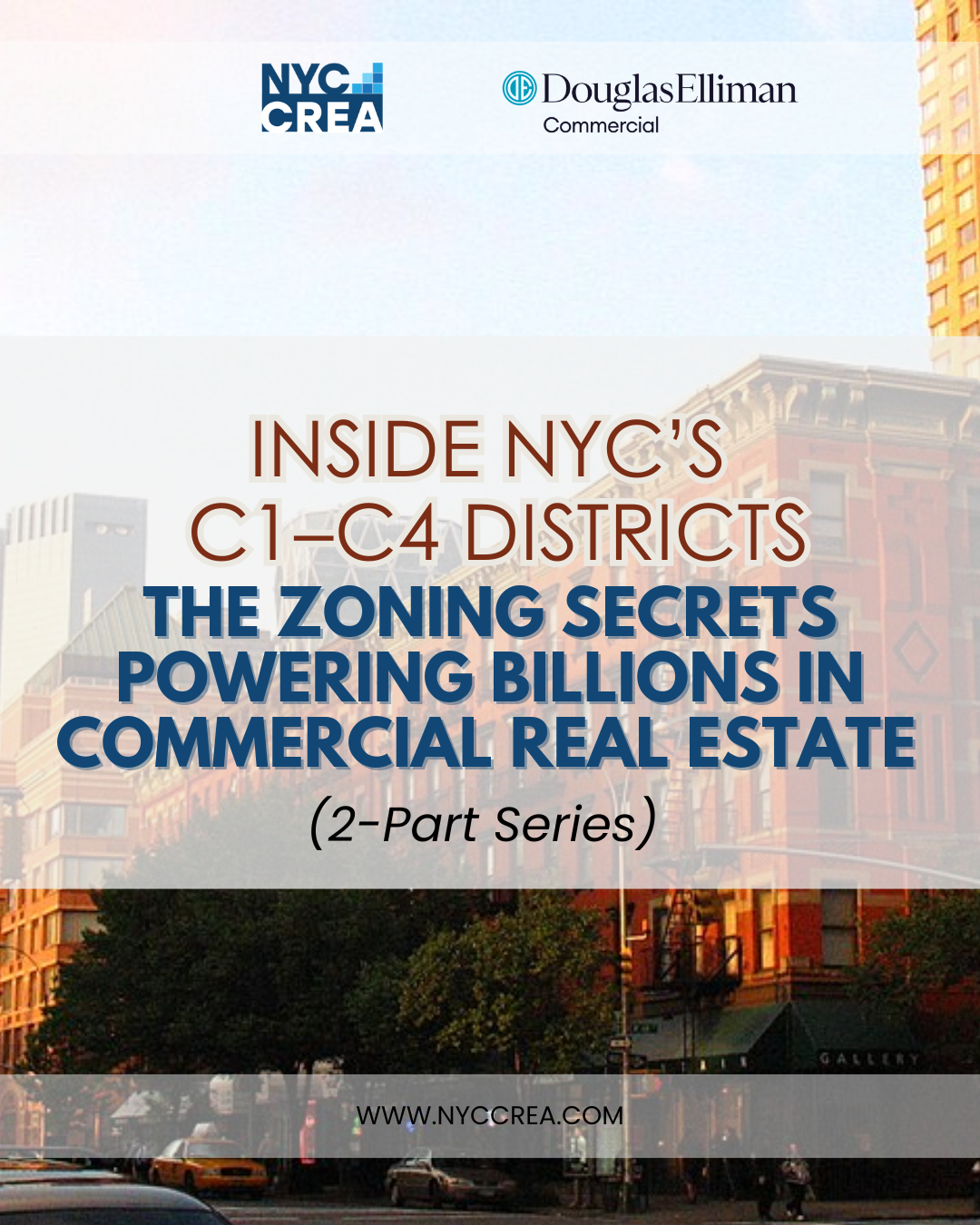November 19, 2025
Highlights
- NYC’s M1, M2, and M3 manufacturing districts shape a vast spectrum of light-to-heavy industrial and commercial activity.
- Performance standards and floor area ratio (FAR) rules define what can be built and where.
- Ongoing zoning updates under City of Yes will further influence industrial, commercial, and mixed-use opportunities.
As NYCCREA brokers, we navigate New York City’s manufacturing districts every day, guiding clients through the complex but opportunity-rich landscape that supports everything from fabrication and logistics hubs to film studios and essential municipal services. While historically designed to separate industrial activity from residential neighborhoods, these districts have evolved dramatically—now accommodating a diverse mix of industrial and commercial uses that continue to fuel NYC’s economy. And as the City of Yes zoning updates roll out in 2025, we expect even greater shifts in how these districts shape commercial real estate.
Below, we walk through the three core manufacturing districts—M1, M2, and M3—and what each means for today’s CRE environment.

Manufacturing Districts: M1
Light Industrial Anchors + Emerging Flex Districts
- Home to light manufacturing, service-oriented industrial users, and select commercial uses
- Allows offices, hotels, and many retail uses; community facilities limited and often require special permits
- In specific subdistricts, residential conversions are permitted, making M1 the most flexible manufacturing zone.
Overview & CRE Impact
M1 districts stretch across NYC—from multistory loft buildings in the Garment District and Port Morris to low-rise warehouses in Red Hook and College Point. These areas traditionally act as buffers between heavier industrial zones and residential or commercial districts, hosting uses such as woodworking shops, repair businesses, and wholesale storage.
The broad allowance for commercial uses—plus permitted offices, hotels, and certain community facilities—makes M1 districts highly adaptable. In CRE terms, that means demand from a wide range of tenants: distribution companies, creative production firms, commercial office users, and increasingly, residential converters in select M1-5M, M1-6M, and M1-6D districts.
The introduction of mixed-use flexibility in certain M1 districts has transformed parts of the city where industrial buildings now blend creative office, commercial, and residential occupancy under strict preservation rules for industrial floor area. FARs ranging from 1.0 to 10.0 (and up to 12.0 with plaza bonuses in M1-6) create room for density—especially appealing for developers seeking vertically oriented flex-commercial assets.
From a CRE standpoint, M1 continues to be the district with the widest opportunity spread—from adaptive reuse to vertical industrial development to e-commerce support infrastructure.
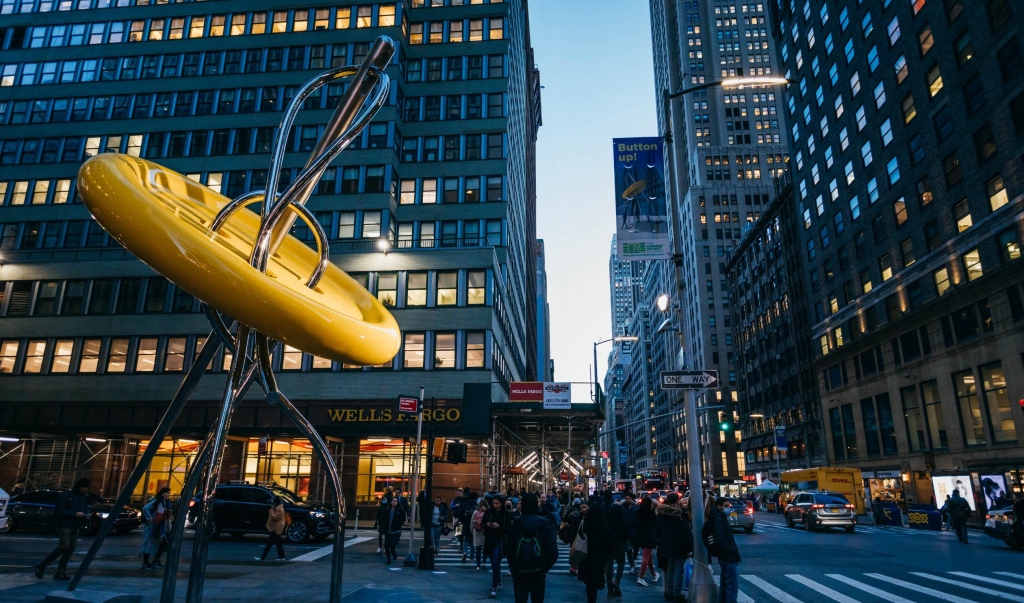
Manufacturing Districts: M2
Mid-Intensity Industrial Hubs Near the Waterfront
- Geared toward medium-intensity industrial uses with more tolerance for noise, smoke, and vibration
- Typically mapped along older industrial waterfront areas
- FARs of 2.0 or 5.0 support logistics, municipal, and specialized industrial operations.
Overview & CRE Impact
M2 districts function as the middle ground between light and heavy manufacturing. These zones—found widely along the city’s waterfronts, including Red Hook, Sunset Park, and Manhattan’s Hudson River piers—accommodate uses that require more operational flexibility, including logistics yards, ferry terminals, ship operations, and municipal facilities.
The purpose of the district is focused on industrial productivity. Performance standards are more lenient, permitting higher levels of noise, smoke, and vibration—features essential for mid-intensity industrial operations.
For CRE, M2 districts represent long-term stability for industrial users who need space that won’t be displaced by commercial or residential demand. Users requiring large footprints, water access, and multi-modal logistics—such as freight operators and public infrastructure agencies—are particularly suited here. FARs of 2.0 or 5.0 support efficient single- or mid-rise structures designed for heavier operational loads.
As NYC modernizes its waterfront and expands maritime-based logistics, we expect M2 properties to see increased relevance in industrial CRE investment.

Manufacturing Districts: M3
Heavy Industry + Essential City Infrastructure
- Reserved for the city’s heaviest industrial uses, such as recycling plants, power facilities, and waste transfer stations
- Typically found near waterfronts and buffered from residential areas.
- FAR capped at 2.0; performance standards accommodate uses with greater environmental impact.
Overview & CRE Impact
M3 districts are where the city places operations that generate significant noise, traffic, or emissions. These districts are home to power plants, heavy recycling facilities, fuel depots, and other high-impact industrial activities. M3 zones are deliberately located near the waterfront and away from residential areas—with examples including the South Bronx shoreline, Arthur Kill in Staten Island, and the Gowanus Canal corridor.
Because M3 districts permit the most intensive industrial uses, they remain a critical backbone of NYC’s infrastructure. The CRE landscape here is largely driven by long-term municipal tenancy, utility providers, and companies requiring high-impact operational capacity. FARs of 2.0 align with the need for large, spread-out industrial sites rather than vertical development.
From a brokerage standpoint, M3 properties tend to offer stable but specialized investment opportunities with limited competition from non-industrial uses. These districts are essential to city resiliency, waste processing, and energy distribution—making them foundational to NYC’s long-term industrial ecosystem.
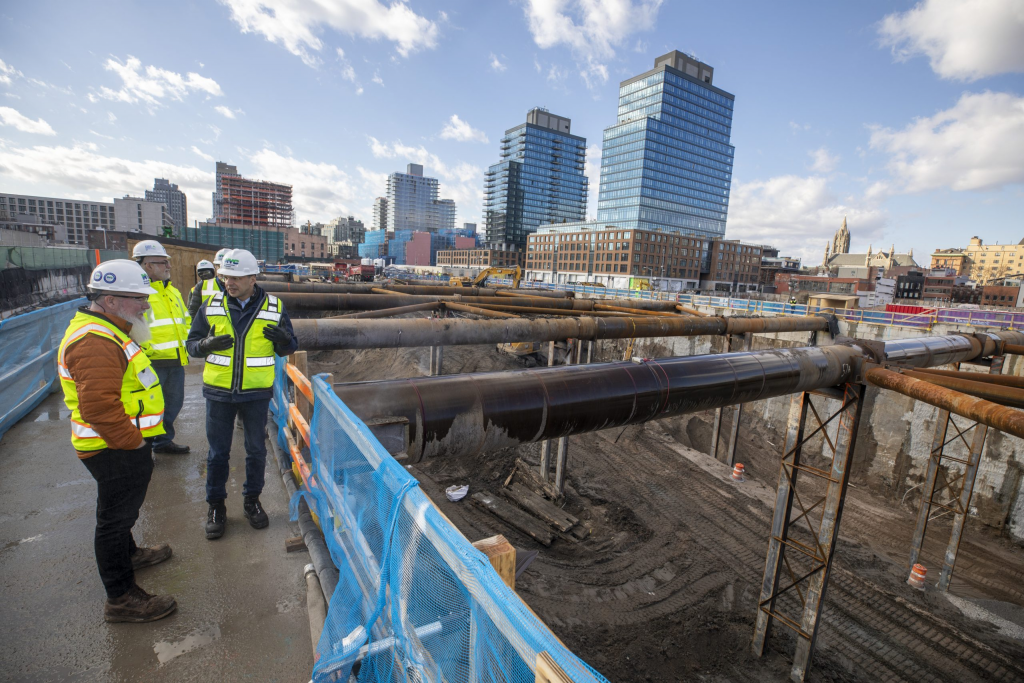
The CRE Impact of NYC’s Manufacturing Districts
As we work with clients across the five boroughs, one thing remains clear: NYC’s manufacturing districts are far more dynamic than their name suggests. They support a vast web of industries—from arts and logistics to utilities and essential infrastructure—each with distinct real estate needs.
- M1 districts offer the greatest flexibility, attracting industrial, commercial, and adaptive-reuse investors.
- M2 districts serve as stable, mid-intensity industrial anchors, especially near active waterfronts.
- M3 districts provide irreplaceable space for heavy industry and municipal operations essential to city functioning.
With the upcoming City of Yes zoning updates expected to reshape rules around manufacturing and mixed-use development, we anticipate even more opportunity—and complexity—across these districts. As NYCCREA brokers, our role is to help clients interpret these changes and uncover value, whether they’re seeking industrial land, flex-commercial assets, or long-term infrastructure-aligned investments.
New York’s industrial future is evolving—and we’re here to navigate it with clarity and expertise.
For the latest news, proven strategies, and exclusive opportunities in commercial real estate in New York City and Western Nassau County NY, visit us at www.nyccrea.com
FOLLOW US:
Facebook: www.facebook.com/newyorkcityCREA
Instagram: www.instagram.com/nyccrea
LinkedIn: www.linkedin.com/company/nyccrea
Reference: Manufacturing Districts, Department of City Planning
